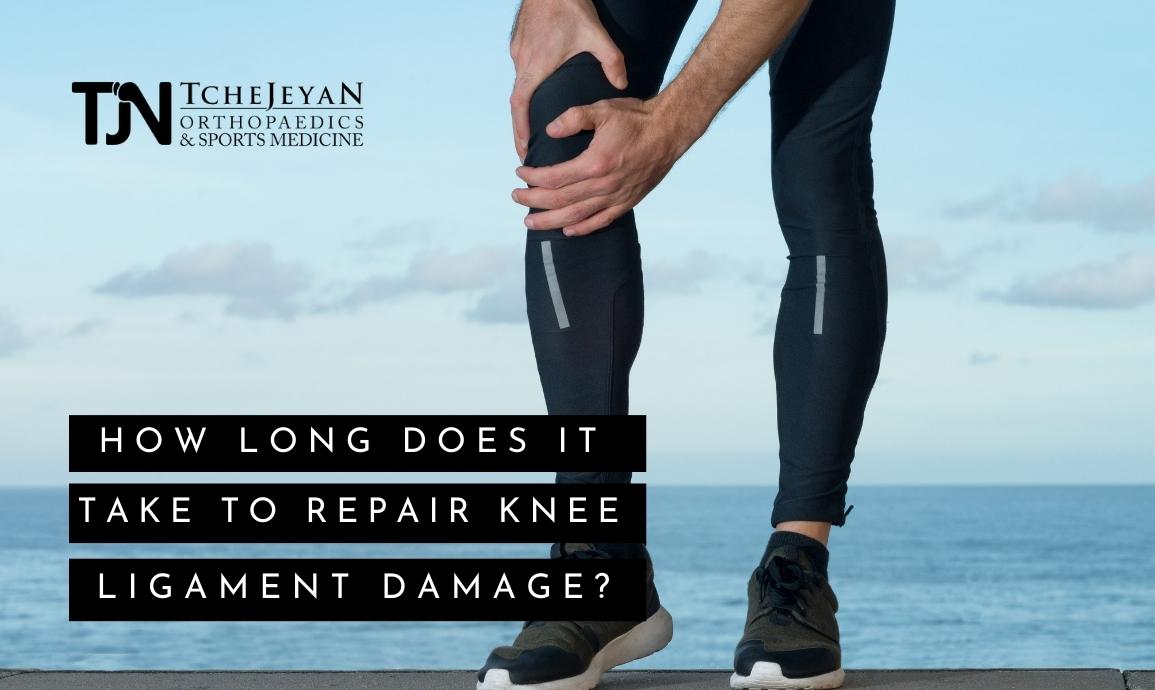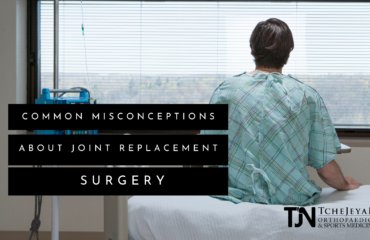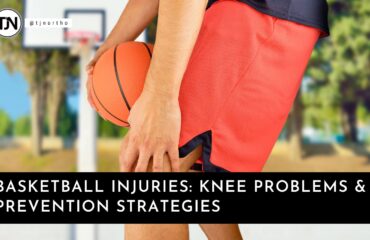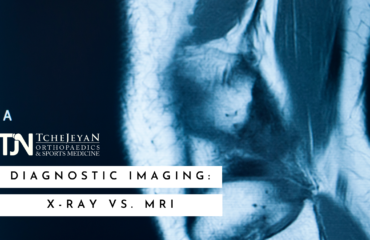Whether you are a competitive athlete or someone who just stays active on a daily basis, a sprained or ruptured knee ligament can definitely set you back. Unfortunately, torn ligaments are a fairly common injury for anyone who enjoys physical activity, and it is not unusual to hear about an athlete being sidelined as a result of a ligament injury. The specialists at Tchejeyan Orthopaedics and Sports Medicine are experts on all aspects of knee health, including ligament injuries. So if you have suffered ligament damage, the good news is that there are ways to repair the damage.
Your knees are large, complex joints that do a lot of the heavy lifting for your body. They have to support most of your body weight and are critical to balance and movement. There are four bones that meet at the knee: the femur (thigh bone), tibia (shin bone), fibula (calf bone), and patella (knee cap). Ligaments are very strong tissues that attach to the bones and connect these bones to one another, stabilizing the knee. Unlike the shoulder and hip which are ball joints, the knee joint moves only in one direction, like a hinge. The ligaments keep the knee bones in the right alignment so that the joint can perform as designed. There are four main ligaments:
- Posterior cruciate ligament (PCL);
- Anterior cruciate ligament (ACL);
- Lateral collateral ligament (LCL); and
- Medial collateral ligament (MCL).
How Does a Ligament Become Damaged?
As noted above, the knee joint is designed to move only in one direction, and it only bends backward, not forward. Unfortunately, some of the movements we make, or some of the impacts we sustain, can cause the knee to bend to the side or forward. Since the ligaments keep the bones in the right orientation to one another, when the knee bends in a way that it is not designed to, those ligaments can get torn. Any of these four ligaments (or other ligaments in the knee) can get torn, but the most common injuries are to the ACL and the MCL.
Most of the time, a ligament tear is the result of an impact, such as a tackle in football, or a car accident. But it can also occur just from a bad movement: twisting or pivoting in a way that puts too much pressure on the knee joint, which can happen when you play basketball or tennis. Or, it can happen just by just crouching down in a way that stresses the ligament beyond the breaking point, even if all you are doing is puttering in the garden.
How Long Does It Take to Heal Ligament Damage?
The first thing most athletes want to know when they have torn a ligament is: when will I be able to play again? Unfortunately, there is no set answer. Recovery times will depend upon the extent of the injury, which ligament has been injured, and what treatment is needed.
If a patient has suffered a sprain, it will still take a few months for the ligament to heal. While no surgery may be warranted, the person will have to rest the knee, and probably wear a brace for a while to give the knee added stability and to prevent further stresses or tears.
If a ligament is torn, healing may require surgery, which means that the patient may have to stay inactive for up to one year. If a patient has torn his ACL, having ACL reconstruction surgery can result in an athlete being able to play again in as little as six months; however, healing times often vary from patient to patient when it comes to an injury that serious.
How Are Ligament Injuries Treated?
The first order of business for anyone coming in for a ligament injury is to perform a diagnosis. The doctor will examine the knee carefully, and will likely order some images to find out the extent of the damage, and whether there is any additional damage – for example, to tendons or to cartilage.
If an injury is relatively minor, the treatment will focus on non-invasive methods. Treatment will entail physical therapy, anti-inflammatory medications, rest, ice, compression, elevation, and other non-invasive therapies.
An added level of treatment is for the patient to use a knee brace. When ligaments are torn or strained, they have less ability to keep the knee bones in the proper orientation to one another. A knee brace acts as a sort of external knee stabilizer and prevents the knee from moving in a way it shouldn’t. This prevents stresses on the ligament, enabling it to strengthen and repair on its own.
Surgery is the remedy of last resort – but it might be quite necessary. When a ligament is badly torn, or does not respond to less invasive therapies, it is the best option. Reconstruction surgery has proven to be very effective in repairing ligament injuries and patients can expect that they will be able to resume all normal physical activities after a full recovery.
When you are an active person, any injury that sidelines you is unwelcome. But the good news is that there are ways to repair ligament injuries that can get you back in the game. To learn more or to make an appointment, contact Tchejeyan Orthopedics Sports Medicine today.




